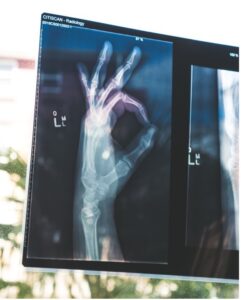September is Pain Awareness Month, a reminder that pain is not something we should ignore or simply “learn to live with.” For many people, hand and wrist pain becomes part of daily life, but these symptoms are often a sign that something deeper is going on. Understanding when your pain may need medical attention is an important step in preventing long-term issues.
At Arora Hand Surgery, Dr. Avery Arora and our team specialize in diagnosing and treating conditions that affect the hand, wrist, fingers, and elbow. Here’s what you need to know about some of the most common causes of hand pain — and when to seek care.
Hand Cramps: Harmless or a Red Flag?
Hand cramps are one of the top symptoms patients search for online, and while they are sometimes linked to temporary issues like dehydration or overuse, they can also point to underlying medical conditions. Nerve compression (like carpal tunnel syndrome), arthritis, or even past injuries can all contribute to painful cramping in the hands and fingers.
If hand cramps are frequent, severe, or paired with numbness and tingling, it’s best to schedule an evaluation. Early care can prevent a small problem from becoming something more disruptive.
Painful Injuries: Broken Knuckles and Nerve Damage
It’s common for patients to ask, “Can a broken knuckle heal on its own?” While minor fractures sometimes heal without surgical treatment, leaving a broken bone untreated can lead to deformity, stiffness, or long-term pain. Proper evaluation with imaging ensures the bone heals correctly and function is preserved.
Similarly, a cut finger with nerve damage may seem like a small injury at first, but untreated nerve injuries can result in permanent loss of sensation or function. Signs of nerve damage include persistent numbness, tingling, or weakness in the finger. Prompt medical attention improves the chances of successful recovery.
Chronic Conditions Behind Hand Pain
Not all hand pain is linked to accidents or overuse. Some conditions develop gradually, affecting mobility and comfort over time:
- Trigger Finger: Causes painful catching or locking of a finger when bent.
- De Quervain’s Tendonitis: Leads to pain on the thumb side of the wrist, often made worse by lifting or gripping.
- Dupuytren’s Disease: A slow-developing condition that causes the fingers to bend toward the palm.
- Osteoarthritis: Wear-and-tear arthritis that causes stiffness, swelling, and aching in the joints of the hands and wrists.
Each of these conditions can impact your ability to perform daily tasks, but effective treatments — both non-surgical and surgical — are available.
Why Early Evaluation Matters
One of the most important lessons of Pain Awareness Month is that pain is not just an inconvenience; it is the body’s way of signaling that something is wrong. Whether it’s hand cramps, a broken knuckle, or ongoing wrist pain, early diagnosis allows for more treatment options and better outcomes.
At Arora Hand Surgery, Dr. Arora is committed to conservative care whenever possible — meaning surgery is considered only after other options are explored. Many patients find relief through splinting, therapy, medication, or injections. When surgery is necessary, advanced techniques are available to restore function and reduce pain.
Take the First Step Toward Relief
Living with pain doesn’t have to be your “new normal.” If you are experiencing hand cramps, nerve-related symptoms, or pain from an injury or chronic condition, don’t wait until it worsens.
Call Arora Hand Surgery today to schedule an appointment and take the first step toward long-term relief. With convenient locations across Southeast Michigan, compassionate care is always within reach.




























